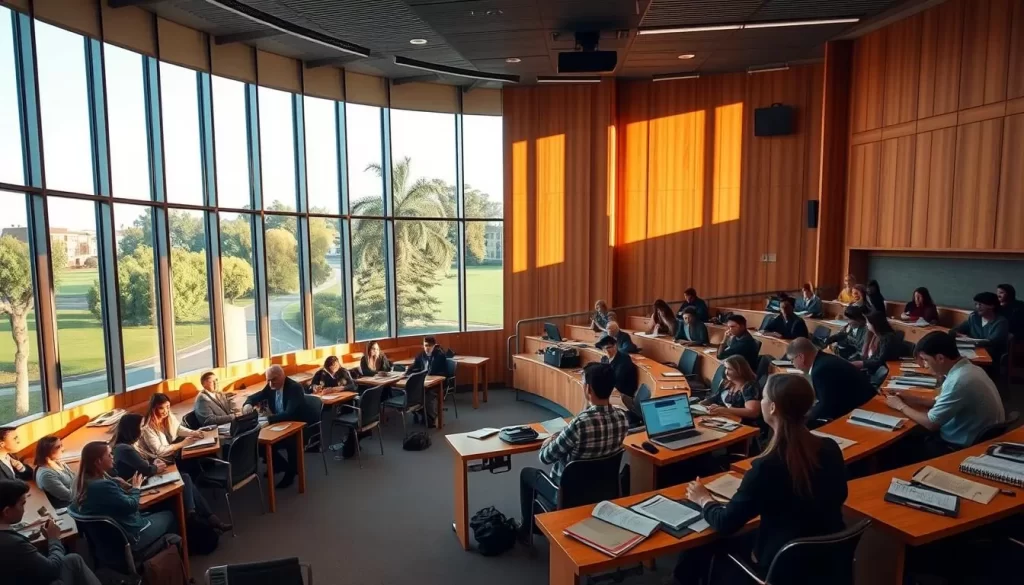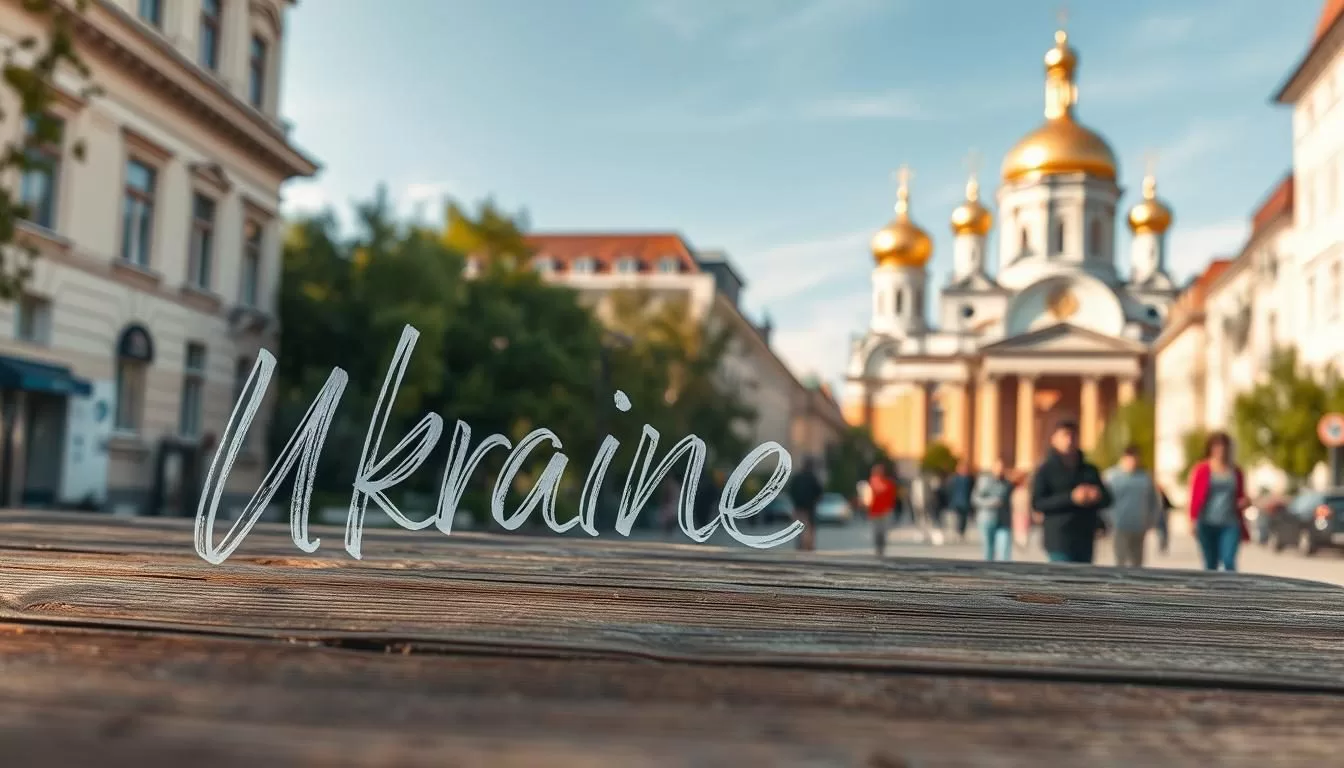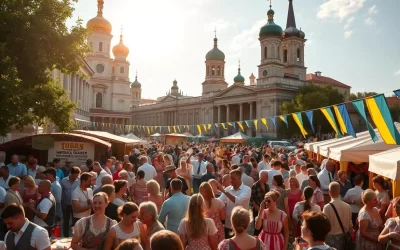✓ Accommodations✓ Flights✓ Rental Cars
When you think about the language of Ukraine, Ukrainian often comes to mind. It’s the state language, deeply rooted in the country’s history and culture. The Cyrillic alphabet plays a key role in writing Ukrainian, adding to its unique identity.
Over the years, Ukrainian has evolved, influenced by historical events. In 1989, it regained its status as the official language after a period of Russification. Today, it’s spoken regularly by a significant number of people, reflecting its importance in daily life.
Understanding this system of communication helps you appreciate the cultural richness of the region. Whether you’re exploring its history or its modern use, Ukrainian remains a vital part of the nation’s identity.
Introduction to Ukraine’s Linguistic Landscape
Exploring the linguistic diversity of this region reveals a rich tapestry of communication. The language spoken here has evolved over time, shaped by historical events and cultural shifts. Today, it stands as a symbol of national identity and unity.
Ukrainian, the primary language, belongs to the East Slavic family. It shares roots with other Slavic languages, creating a unique connection across borders. This linguistic heritage is deeply embedded in the region’s history.
Bilingual environments are common, with many individuals switching between languages daily. For instance, a parent might speak one language at home while their student uses another at school. This dynamic reflects the region’s complex linguistic identity.
Over different periods, policies have influenced how language is used in public institutions. From schools to media, these changes have shaped societal norms. Today, the emphasis on Ukrainian highlights its cultural significance.
“Language is not just a means of communication; it’s a reflection of identity and history.”
Here’s a quick overview of daily language use across regions:
| Region | Percentage Speaking Ukrainian Daily |
|---|---|
| Western | 95.6% |
| Central | 78.3% |
| Southern | 34.6% |
| Eastern | 40.3% |
Understanding this linguistic landscape helps you appreciate the region’s cultural richness. Whether you’re a student, a parent, or simply curious, the role of language here is both fascinating and vital.
Historical Context of Language in Ukraine
The roots of Ukrainian language trace back to the medieval state of Kievan Rus’. During this period, Old East Slavic dialects laid the foundation for modern communication. These early forms were a part of the broader East Slavic family, which also influenced other Slavic languages.
By the 10th century, the Cyrillic alphabet became a key tool for writing. It helped preserve the linguistic identity of the population. Over time, these dialects evolved, creating a distinct language that would later become Ukrainian.

The influence of the Russian Empire brought significant changes. Policies aimed at unifying the region often suppressed local dialects. Despite this, the Ukrainian language continued to develop, maintaining its unique characteristics.
Understanding this history helps you appreciate the cultural richness of the region. The language you hear today is a testament to centuries of resilience and adaptation.
Ukraine: Official and widely spoken languages
The role of language in shaping identity is undeniable. In this region, the Ukrainian language stands as a symbol of unity and cultural heritage. It was reaffirmed as the state language in 1989 and later confirmed in the 1996 constitution.
Ukrainian as the State Language
Ukrainian is the primary language used in schools, media, and public institutions. Over 68% of citizens consider it their native language, reflecting its widespread use. This legal status ensures its role in formal communication and education.
In urban areas like Kyiv, the language is often heard in public spaces, shops, and cafes. This reflects its growing influence in daily life.
Minority Languages and Regional Variations
While Ukrainian dominates, minority languages remain vibrant. Russian is spoken by a significant portion of the population, especially in the eastern and southern regions. In Crimea, Russian and Crimean Tatar hold official status due to the local demographics.
Bilingualism is common, with many individuals switching between languages depending on the context. For example, a parent might speak Ukrainian at home while their child uses Russian at school.
| Region | Primary Language |
|---|---|
| Western | Ukrainian |
| Central | Ukrainian |
| Southern | Russian |
| Eastern | Russian |
This linguistic diversity highlights the region’s rich cultural tapestry. Whether you’re a student, a parent, or simply curious, understanding this system of communication offers valuable insights.
Influence of Imperial and Soviet Policies on Language
Imperial and Soviet policies left a lasting mark on the linguistic identity of the region. These efforts aimed to reshape the language landscape, often at the expense of local dialects and cultural heritage.
Russification and Cultural Suppression
Under imperial rule, the Russian Empire pursued aggressive Russification policies. For example, the Valuev Circular declared that the Ukrainian language “never existed, doesn’t exist, and cannot exist”. This stance aimed to erase linguistic diversity and unify the population under Russian cultural norms.
During the Soviet era, these efforts intensified. By the 1930s, a decree mandated Russian language courses in all schools across the Soviet Socialist Republics. This policy was part of a broader strategy to promote Russian as the dominant language and suppress local dialects.
“Language is not just a tool for communication; it’s a vessel for identity and resistance.”
Educational practices shifted dramatically. In 1938, another decree made Russian a compulsory subject in schools, and by 1958, the transition to Russian for education was complete. These changes aimed to control the population and solidify Soviet influence.
Regional language practices also transformed under these policies. In areas like Crimea, Russian became the dominant language, reflecting the broader goals of Russification. Despite these efforts, the Ukrainian language persisted, a testament to its cultural resilience.
Understanding this history helps you appreciate the challenges faced by the population in preserving their linguistic identity. The impact of these policies is still felt today, shaping the region’s language landscape.
Modern Language Policy and Educational Initiatives
Modern efforts to shape the linguistic landscape focus on education and public life. Legislative changes have reinforced the role of the state language, ensuring its prominence in schools and public institutions. This shift reflects a broader commitment to cultural identity and unity.
Language in Schools and Public Life
Schools have become a key part of this transformation. Curricula now emphasize the state language, helping students connect with their heritage. Public campaigns further support this goal, encouraging its use in daily interactions.
Bilingual environments remain common, especially in regions where Russian is prevalent. A parent might speak one language at home, while their child uses another at school. This dynamic highlights the ongoing adaptation to modern policy.
Public life has also seen significant changes. From media to government offices, the state language is now the norm. This shift underscores its growing influence in shaping national identity.
“Language is not just a tool for communication; it’s a reflection of identity and history.”
These initiatives mark a new period in the region’s linguistic journey. By fostering bilingual environments while emphasizing the state language, modern policy aims to balance tradition and progress.
Religious and Cultural Influences on Ukrainian Language
Religious traditions have long shaped the way people communicate and express their identity. In this region, faith plays a key role in preserving the language and its cultural significance. Both Eastern Orthodoxy and Greek Catholic traditions have left a lasting mark on the system of communication.

Eastern Orthodoxy and Greek Catholic Traditions
The Orthodox Church has been a cornerstone of cultural identity for centuries. Its rituals and texts have helped maintain the Ukrainian language during periods of suppression. Similarly, the Greek Catholic tradition has preserved unique linguistic expressions, especially in western regions.
In 2019, the merging of church bodies marked a significant shift in religious influence. This event strengthened the role of faith in shaping the language and its use in daily life.
Impact of Historical Legends and Literature
Historical legends and literary works have also played a vital role in enhancing cultural narratives. Stories passed down through generations often reflect the values and beliefs of the population. These tales are deeply embedded in the language, making it a vessel for cultural pride.
Authors like Taras Shevchenko have used their work to inspire national identity. Their writings continue to influence how people perceive and use the Ukrainian language today.
“Language is not just a tool for communication; it’s a reflection of identity and history.”
Understanding these religious and cultural factors helps you appreciate the richness of the language. Whether through faith or literature, these influences continue to shape its development and significance. For more insights, explore why the Ukrainian language matters more than.
Regional Variations: Urban and Rural Language Use
Language use in urban and rural areas reveals fascinating contrasts. In cities like Kyiv and Lviv, the language landscape is shaped by modern influences and diverse populations. Rural settings, however, often preserve traditional dialects and cultural expressions.
In urban centers, bilingualism is common. A parent might speak Ukrainian at home, while their child uses Russian at school. This dynamic reflects the region’s complex linguistic identity.
Rural areas, on the other hand, tend to favor Ukrainian. Local policy initiatives often support this trend, promoting the state language in public spaces. These efforts aim to strengthen cultural ties and national unity.
Here’s a quick comparison of language use in different settings:
| Setting | Primary Language | Bilingualism Rate |
|---|---|---|
| Urban | Ukrainian, Russian | High |
| Rural | Ukrainian | Low |
Cultural influences also play a key role. In cities, global trends often shape language practices. Rural regions, however, remain deeply connected to local traditions.
Understanding these regional differences helps you appreciate the richness of the language landscape. Whether in a bustling city or a quiet village, communication reflects the unique identity of each region.
For more insights into how policy shapes these practices, explore Ukraine’s language policy.
Language and National Identity in Contemporary Ukraine
In contemporary times, language has emerged as a powerful symbol of national identity and independence. Post-2014, public sentiment has strongly favored the Ukrainian language, reflecting its role as both a cultural and political statement.

Key moments in history highlight how language contributed to movements for independence. For example, the 2019 law mandating the use of Ukrainian in all social domains was a significant step in promoting it over Russian. This legislative reform affirmed language as a tool of national pride.
Modern examples show how public choice in language is a form of support for the nation. In 2014, 56% of respondents wanted the state to promote Ukrainian, while only 5% opted for Russian. This shift underscores the growing influence of Ukrainian in daily life.
“Language is not just a tool for communication; it’s a reflection of identity and history.”
The symbolism of independence influences everyday language use. In traditionally Russian-speaking regions, a significant increase in Ukrainian usage has been observed. This change reflects a broader commitment to cultural identity and unity.
Understanding these dynamics helps you appreciate the role of language in shaping national identity. For more insights, explore language and identity in contemporary Ukraine.
The Role of Media and Popular Culture in Language Revival
Media and popular culture have become powerful tools in shaping linguistic identity. Over the past decade, platforms like social media have played a key role in reviving interest in the language. This shift is particularly evident in urban areas, where digital campaigns have transformed how people communicate.
Social Media and Public Campaigns
Social media has emerged as a vital part of this movement. Campaigns encouraging people to speak Ukrainian have gained widespread support. Public figures, including President Zelenskyy, have used these platforms to promote the language and inspire national pride.
Here’s how media has influenced this development:
- Increased visibility of the language in digital spaces.
- Public campaigns that encourage its use in daily life.
- Cultural initiatives that highlight its historical significance.
“Language is not just a tool for communication; it’s a reflection of identity and history.”
In cities like Kyiv, the transformation is clear. More people are choosing to use Ukrainian in public spaces, reflecting a broader cultural shift. This change is fueled by modern media, which continues to shape both personal and collective identity.
Public campaigns have also played a crucial role. By fostering a sense of national pride, they’ve encouraged people to embrace their linguistic heritage. This period marks a significant step in the development of the language and its role in society.
Academic Perspectives and Linguistic Research Developments
The journey of the Ukrainian language from Old East Slavic to its modern form is a topic of intense scholarly debate. Researchers have explored its evolution, uncovering layers of grammatical, phonological, and cultural influences. This academic work provides valuable insights into how the language has adapted over centuries.

Insights from Language Scholars
Prominent scholars have examined the Ukrainian language through various lenses. Studies often focus on its roots in the East Slavic family, tracing its development from medieval times to the present. For example, linguistic research highlights how the language retained its unique identity despite external pressures.
Case studies comparing Ukrainian with other East Slavic languages reveal fascinating patterns. These analyses show how historical events, such as the influence of the Orthodox Church, shaped its vocabulary and grammar. Such findings underscore the language‘s resilience and cultural significance.
“Language is not just a tool for communication; it’s a reflection of identity and history.”
Academic research also informs contemporary language policies. By understanding its historical development, scholars contribute to efforts that promote its use in education and public life. For more on this topic, explore language and power relations in Ukraine.
Conclusion
The evolution of language reflects a nation’s journey through history and identity. Over time, historical forces, policy changes, and cultural influences have shaped the linguistic landscape we see today. From early periods to the modern era, the Ukrainian language has remained a central part of national pride and unity.
Modern initiatives encourage the use of the state language in schools, media, and public life. This shift highlights its growing support among the population. Bilingual environments, especially in urban areas, showcase the dynamic nature of this system of communication.
Understanding these factors helps you appreciate how language shapes identity. For deeper insights, explore bilingualism in the region.
The above is subject to change.
Check back often to TRAVEL.COM for the latest travel tips and deals.





